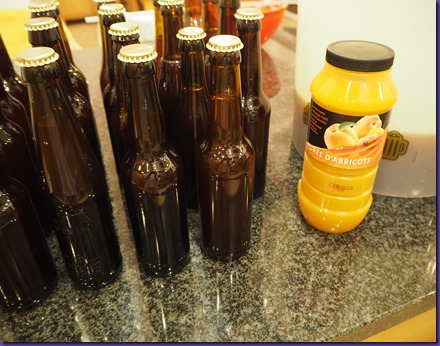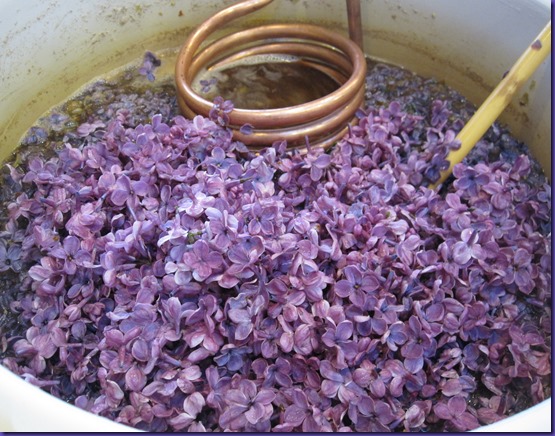Back in November 2014 we decided to move our homebrewing to the next level and make a sour beer. This has been quietly fermenting under our stairs since then. Yes, fermenting a sour beer can take a year or more. After an initial fermentation by yeast, which makes alcohol, the remaining sugars (generally the complex ones that the yeast cannot metabolise) are consumed by bacteria which produces the sour flavours – lactic acid, some acetic acid and other byproducts that give interesting flavours.
The recipe we used was based on Rodenbach Grand Cru, so naturally the Cheshire Peaks version will be Sandbach Grand Cru. (If you don’t know where Sandbach is, follow this link).
We tasted the beer a week or two back – sure enough we have a complex sour flavour reminiscent of Rodenbach and with not too much acetic acid (vinegar) flavour. Too much oxygen during fermentation leads to excess acetic acid production which spoils the beer. I’m very pleased we managed to avoid that on our first sour brew.
This Saturday we racked and bottled one third of the beer. We also racked another third into a fermenter and added 1kg of apricot puree. The last third remains in the carboy. When the apricot version is finished and bottled we’ll rack the last third and add cherries. Voilà! Three beers from one!
The cherry beer will hopefully be reminiscent of the discontinued Rodenbach Alexander and will of course be called Sandbach Alexander. (We’re open to suggestions for the name of the apricot version!)
We’re already planning how we can re-use our bacteria for a second sour beer: probably a sour porter.






